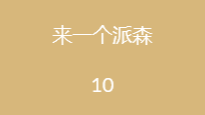CTFshow Reverse 来一个派森 wp
.py文件打包成的exe,用"pyinstxtractor.py"解包
uncompyle6反编译checkme.pyc文件转为py文件(可反编译的前提是checkme.pyc文件与struct.pyc文件前12个字节相同)
b58encode的逻辑是先对输入进行base58变换,变换后再与下标异或,最后和check比较
查看代码
def b58encode(tmp: str) -> str:
tmp = list(map(ord, tmp))
temp = tmp[0]
base58 = '123456789ABCDEFGHJKLMNPQRSTUVWXYZabcdefghijkmnopqrstuvwxyz'
for i in range(len(tmp) - 1):
temp = temp * 256 + tmp[(i + 1)]
tmp = []
while 1:
tmp.insert(0, temp % 58)
temp = temp // 58
if temp == 0:
break
temp = ''
for i in tmp:
temp += base58[i]
tmp = []
for i in range(len(temp)):
tmp.append(chr(ord(temp[i]) ^ i))
check = [
'A', '5', 'q', 'O', 'g', 'q', 'd', '\x7f', '[', '\x7f', 's', '{', 'G', 'A', 'x', '`', 'D', '@', 'K', 'c', '-', 'c', ' ', 'G', '+', '+', '|', 'x', '}', 'J', 'h', '\\', 'l']
if tmp == check:
return 1
else:
return 0
flag = input('输入flag:')
if b58encode(flag):
print('you win')
else:
print('try again')编写逆向脚本
逆向逻辑为:将check各元素与下标异或,再解base58
def b58decode(tmp:str) -> str:
import binascii
base58 = "123456789ABCDEFGHJKLMNPQRSTUVWXYZabcdefghijkmnopqrstuvwxyz"
temp = []
for i in tmp:
temp.append(base58.index(i))
tmp = temp[0]
for i in range(len(temp)-1):
tmp = tmp * 58 + temp[i+1]
return binascii.unhexlify(hex(tmp)[2:].encode("utf-8")).decode("UTF-8")
check = ['A', '5', 'q', 'O', 'g', 'q', 'd', '\x7f', '[', '\x7f', 's', '{', 'G', 'A', 'x', '`', 'D', '@', 'K', 'c', '-', 'c', ' ', 'G', '+', '+', '|', 'x', '}', 'J', 'h', '\\', 'l']
for i in range(len(check)):
check[i]=chr(ord(check[i])^i)
print(b58decode("".join(c for c in check)))
# ctfshow{zhe_bu_shi_flag}

 用"pyinstxtractor.py"解包,uncompyle6将pyc文件转py,代码逻辑是先对输入进行base58变换,变换后再与下标异或,最后和check比较。编写逆向脚本,将check各元素与下标异或,再解base58,得到ctfshow{zhe_bu_shi_flag}
用"pyinstxtractor.py"解包,uncompyle6将pyc文件转py,代码逻辑是先对输入进行base58变换,变换后再与下标异或,最后和check比较。编写逆向脚本,将check各元素与下标异或,再解base58,得到ctfshow{zhe_bu_shi_flag}
